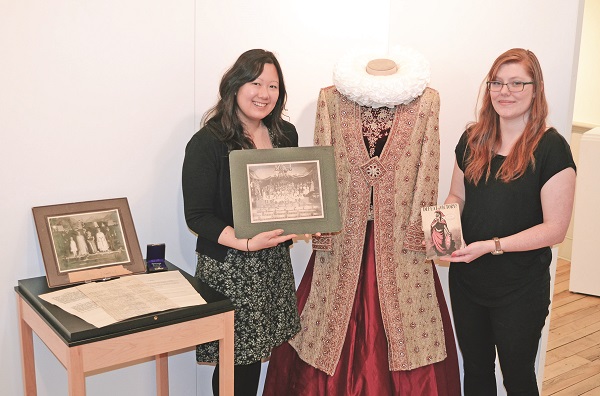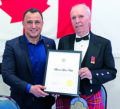General News » News
Women’s changing roles explored ahead of milestone anniversary
April 18, 2018 · 0 Comments

By Brock Weir
They might not have been marching down Yonge Street demanding the vote like their sisters in big cities like Toronto and Washington D.C., but 100 years ago Aurora women were working quietly behind the scenes to be the change they wanted to be in the world.
These woman and their contributions are the focus of a new exhibition at the Aurora Museum & Archives to coincide with a multi-fold 100th anniversary celebration.
Temple of Fame: Staging Women’s Roles opens at the Museum this Wednesday, April 25, exploring how the upcoming re-staging of the play, the Temple of Fame, illuminates the changing roles of women that came about during – and in the aftermath of – the First World War.
The Temple of Fame was an all-female production led by leading women in the Aurora community in 1918 celebrating important women throughout history. A refreshed and updated version of the play will be remounted to mark its centenary next month, just in time for Mother’s Day.
This new exhibition shines a light not only on the women who brought such iconic figures as Queen Victoria and Joan of Arc to life, but the international influences swirling around them.
“The Museum received [an archive] that contained a whole bunch of material on the Temple of Fame and when they received it in 2015, they knew they wanted to do a 100th anniversary celebration,” says Maeghan Jerry, one of three women curating the exhibition as their capstone project for the Masters of Museum Studies program. “We were offered the opportunity to make an exhibit that provides the whole historical context of this play.”
Adds fellow curator Kara Isozaki: “1918 is suffrage, temperance, and the war, and those are interesting things to pull from. The archive has objects that relate to that, so this is not just talking about the performance, but what else was happening at the time and what would have influenced the women in the production.”
But, first, they needed to learn as much as they could about the local women involved in the production 100 year ago.
They were given a number of pictures, along with a complete cast list, and they wanted to match the names to the faces.
This might sound simple enough, but at the time, the women were largely listed as “Miss” followed by an initial, or Mrs., followed by their husband’s name.
They matched up most of the women, found the human stories they could, analysed their own wartime experiences and linked them back to a wider international context.
“Starting out researching the women, I hoped we would find more about them, how they met, and hoped the correspondence in the Temple of Fame file there would be a lists of who they were and where they were drawn from,” explains Kara. “People were in the Dramatic Club, the Choral Society, but not everyone. Was hoping for a ‘neat’ thing. The reality is you have to dig for things and find people in different places and we found some really cool stories.”
Adds Maeghan: The problem when you’re dealing with archival information is absence of evidence is not evidence of absence. Just because you can’t find something doesn’t mean it didn’t happen. It means we had to dive a bit deeper into other aspects that might have led to other results.”
The Temple of Fame archive, their starting point, gave up other secrets. If they couldn’t flesh out the back stories of some of the women, so complete was the file with receipts and costume orders, they were able to determine the exact measurements of each women, how much was spent, and much of the administrative minutia, but the stories they were able to find form the core of the exhibit.
“We live in a time where women are really pushing back, but this gives the impression that women have always been pushing back and contributing to their communities,” says Maeghan. “The play seems like a fun event, but it is actually part of a change that was ongoing and it was a big deal. A few weeks after this production, women got the right to vote nationally.
“We have so many examples of women here doing things that matter to people fighting a World War, sending numbers of care packages, knitting x-amount of socks, raising this amount of money – amazing things Aurora did on an international scale. I am very proud of what these women accomplished and I think Aurorans should be too.”
Wednesday’s opening will be held at the Museum, located at 22 Church Street, from 5.30 – 8.30 p.m. For more information, visit www.auroramuseum.ca/temple.











